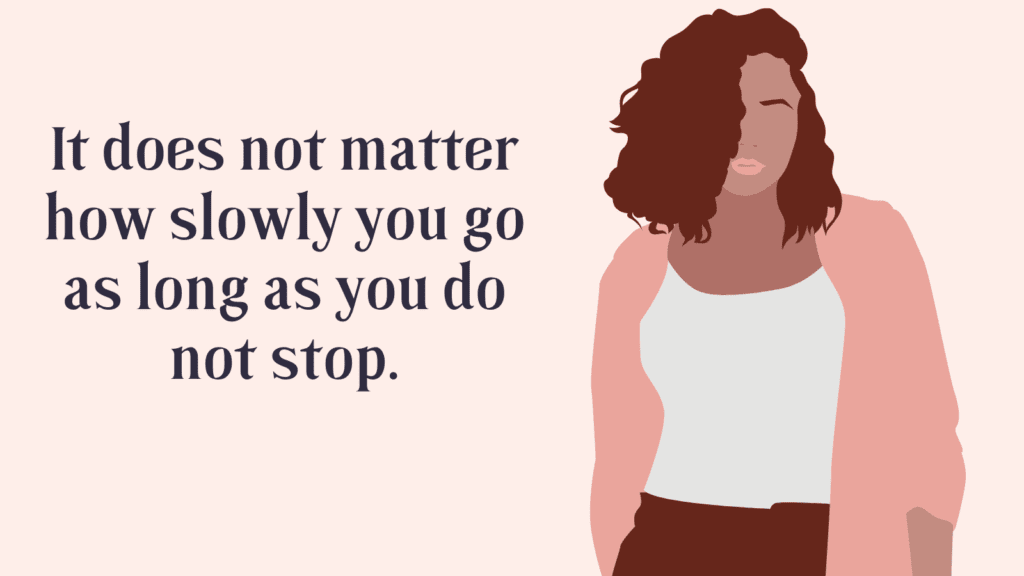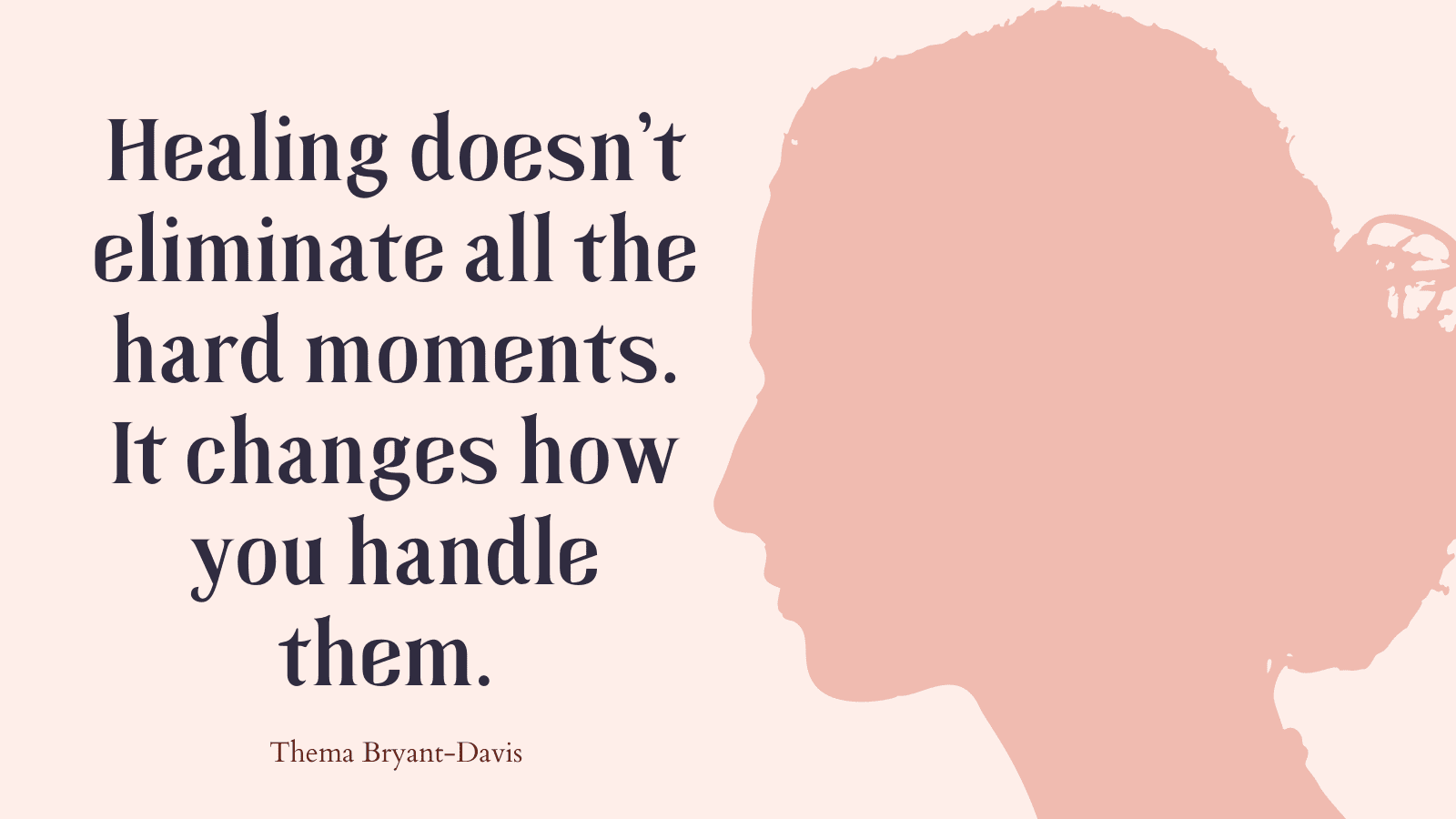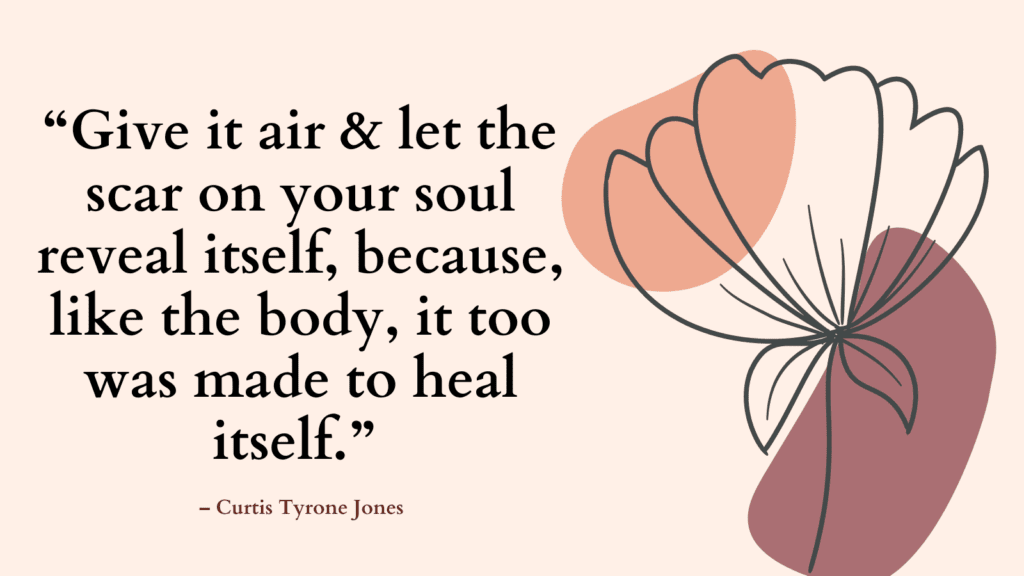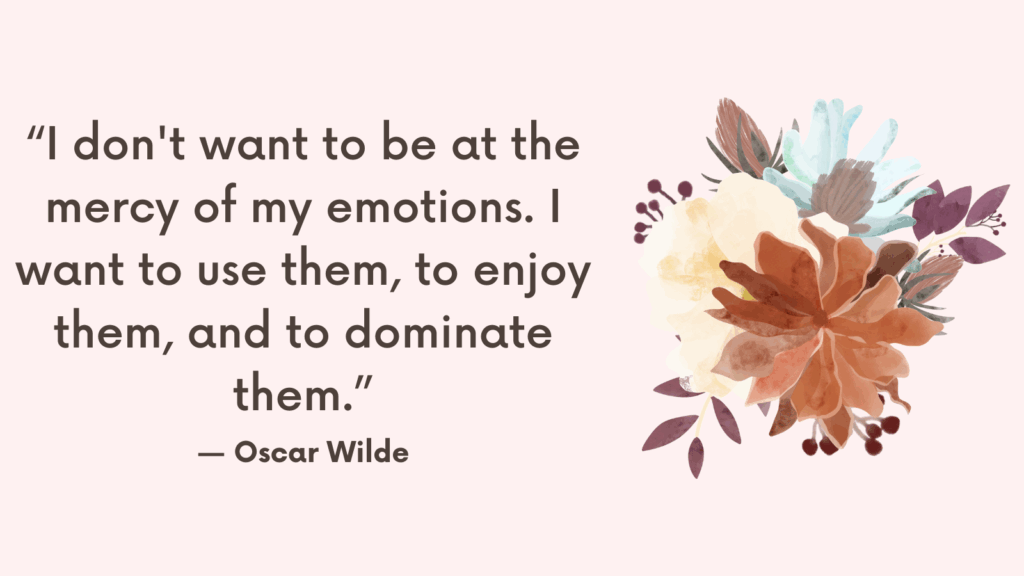Today, you’re going to learn how to overcome agoraphobia without medication using 9 practical steps to reduce the severity and frequency of panic attacks.
Many people assume agoraphobia is simply a fear of open spaces,
But it’s actually a more complex condition.
Agoraphobia may also involve fear of enclosed spaces, traveling, conflict situation (arguments), confinement or restriction of movement (being on the dentist’s chair, or on a line at a store, etc).
The physiological reactions of someone with agoraphobia can be as severe as those with claustrophobia who is facing an open elevator.
Panic attacks, a main symptom of agoraphobia, can run your life that you fear leaving your home entirely.
Panic attacks can be frustratingly unpredictable – they happen in airplanes, highways, shopping malls, confined places, schools, grocery stores, meetings, social events, and even at home.
The racing heart, the tightening chest, and the uncomfortable feeling throughout the body can be severely distressful.
What’s Agoraphobia?
The literal meaning of agoraphobia is “fear of the marketplace.”
A person with agoraphobia is afraid to leave environments they consider to be safe for fear of having anxiety or a panic attack.
Agoraphobia may involve fear of public places or enclosed spaces, traveling, conflict situation (arguments), confinement or restriction of movement (being on the dentist’s chair, or on a line at a store, etc).
Fearful thoughts, people with agoraphobia struggle with, revolve around loss of control and developing uncomfortable physical sensations to the point of fainting or even having a heart attack.
The main symptom of agoraphobia is a fear or avoidance of being alone or in certain public places. This significantly limits the individual’s normal activities. They may quit their jobs, stop driving, or taking public transportation or stop shopping, eating in restaurants, or even venturing outside their home.
By avoiding their fear, people with agoraphobia often have to sacrifice friendships, family responsibilities, and even careers. This can only compounds the problem and lead to low self-esteem, isolation, and depression.
In an attempt to cope, they might become dependent on alcohol or drugs or other types of addictions.
Panic Disorder
Panic disorder is a form of anxiety disorder in which the individual suffers from recurring and unexpected panic attacks.
Panic disorder also includes the fear of having panic attacks, especially in places or situations where it may be inconvenient to have one.
Related: How to Treat Your Anxiety Using Cognitive Behavioral Therapy (CBT)?
Although anyone can experience panic attacks, people who have been exposed to traumatic events, such as war, accident, sexual abuse, etc report experiencing panic attacks.
These panic attacks are symptoms of post-traumatic stress disorder (PTSD), which is another form of anxiety disorder.
Related: Trauma Release Exercises: 6 Practical Exercise to Support Healing After Trauma
Panic Disorder Diagnosis: Symptoms of Panic Disorder
Classic physiological and cognitive symptoms of a panic attack might include the following:
Physiological Symptoms
- Rapid heart rate
- Shallow breathing
- Tightening of chest
- Hot flashes
- Hyperventilating
- Sweating
- Trembling/shaking
- Coldness/chills
- Tunnel vision
- Gastrointestinal issues
- Nausea
- Lightheadedness/dizziness
Cognitive Symptoms
You might have experienced some or many of the following thought during a panic attack:
- Thoughts that you are having a heart attack.
- Thoughts that you are going crazy.
- Thoughts that you are going to die.
- Thoughts that you can’t handle this.
- Thoughts that you are losing control.
- Thoughts that you are never going to calm down.
You may also experience derealization or depersonalization—the feeling that you are not real or the situation is not real, momentarily distortion of your perception of reality.
Agoraphobia vs. Panic Disorder
The distinction between agoraphobia and panic disorder is mainly based on how many activities an individual avoids.
People with panic disorder may avoid a few uncomfortable situations but will remain relatively active.
However, when the number of normal activities avoided increases, agoraphobia would be a more appropriate diagnosis.
Avoidance Behaviors
The severity and unpredictability of panic attacks, can make you grow afraid to even leave you home in order to avoid having them.
Avoidance behavior include avoiding places and situation that might trigger panic attacks, such as Airplanes, Bridges, Class/school, Crowded spaces, Elevators, Grocery stores, Job interviews, Meetings, Public speaking/ Presentations, Romantic relationships, Social events, etc.
But it also means using safety behaviors to avoid panic attacks or to prepare yourself in case you might have one, such as:
- Always carrying a bottle of water with you
- Always carrying a certain medication with you
- Avoiding places at certain times of day
- Avoiding going to certain places alone
- Etc.
While avoidance behaviors offer momentarily relief, this safety comes at a cost.
You life become narrower and more isolated, which leads to more anxiety and possibly depression, especially when situations that cause panic attacks are ones that are important to you and have a significant impact on your life.
Related: Avoidant Personality Disorder (AvPD) – Symptoms, Causes, & Treatment
3 Myths About Panic Attacks
Myth 1: I could have a heart attack and die during a panic attack.
Fact: A healthy heart can beat two hundred beats per minute for days without being damaged in any way (Bourne 2000).
However, if you experience panic attacks, it is recommended to see a doctor for a full physical examination to make sure that your symptoms are related to panic attacks and not to some kind of physical problem.
Myth 2: I could faint if I have a panic attack.
Fact: Fainting occurs when the blood rushes from your head.
When you’re having a panic attack, the opposite happens. The heart is pumping harder, which increases your circulation.
If you haven’t fainted during a panic attack before, chances are it won’t happen.
Symptoms like feeling dizzy and light-headed can be caused by hyperventilating (breathing quickly and shallowly, which decreases the levels of carbon dioxide in your body).
How to Stop Hyperventilating?
Slowly breathe into a paper bag or cupped hands in a way that allows you to rebreathe the air you’ve just exhaled, restoring the carbon dioxide levels in your body to normal and stopping the hyperventilating.
Myth 3: I’ll lose control if I have a panic attack.
Fact: Even though panic can make you feel dizzy and cause your limbs to feel weak, in general, these sensations aren’t so severe that you would fall over.
If you’re worried about how you look to others during a panic attack, remind yourself that just because you feel awful doesn’t mean that it’s apparent to others.
How To Overcome Agoraphobia Without Medication?
#1. Discover The Mind–Body Connection
The first step in overcoming panic attacks is changing your lifestyle.
A healthy lifestyle can make a huge difference in reducing your anxiety and panic, and improving your mood.
This involves working on improve your sleep quality, physical activity, and nutrition.
Taking care of these aspects, will reduce your stress and leave you more energized in general, so when panic hits, you will be in a better position to handle the symptoms, which will also be less severe and less frequent.
1. Sleep
* Create a bedtime routine that doesn’t involve screen time or any mind stimulation, starting about 30 minutes before you go to sleep.
* Keep your bedroom as cool, dark, and comfortable as possible.
* Listen to calming sounds to help you fall asleep.
* Don’t exercise or eat within one to two hours of bedtime.
Pro Tip: Fall asleep faster with Amber light. SOMNILIGHT offers a wide range of products that blocks blue light and help you fall asleep up to an hour faster. Use this link to receive a coupon code for 10% off any purchase. (Free U.S. shipping and 60-day money back guarantee.)
Read More: How to Sleep Better? (18 Proven Tips to Sleep Well at Night and Wake Up Rested)
2. Physical Activity
* Start your day with stretching exercises.
* Walk or jog around the block.
* Watch and follow along with an exercise video suited for your level of fitness.
* Take a yoga class or do some basic yoga poses on your own.
* Use the stairs instead of the elevator, park your car farther and walk, and find other ways to add more movement every day.
3. Nutrition
* Search online for healthy recipes, or get a food magazine or a cookbook.
* Plan your meals for the week and prepare your shopping list accordingly.
* Cook in quantity and freeze it for later.
Limit Caffeine
Caffeine is a stimulant, which means that it is going to increase your heart rate – a classic symptom you are trying to reduce in panic disorder.
#2. Improve Your Self-Esteem
When you being to believe in your own worth, you can find the energy to push through setbacks and face your fears.
To assess your self-esteem, try reflecting on these questions:
- Do I feel devastated by others’ criticisms?
- Do I tend to beat myself up over my mistakes? Do I consider mistakes to mean the same thing as failure?
- Do I accept compliments? Do I really believe people when they compliment me?
- Do I need to do everything perfectly?
- Do I hesitate to try new tasks for fear I will fail?
- If I believe I can’t do something perfectly, do I avoid doing it?
- Do I have trouble setting limits on how much I give to others?
- How many times have I said yes to myself this week? This year?
If your think self-esteem could use some strengthening, the following are a few guidelines to help you on your way:
1. Refrain from putting yourself down for your mistakes, or negatively talking to yourself. No one deserves to be humiliated, not even by themselves. Negativity breeds negativity.
Instead, be your own cheerleader, comfort yourself and speak compassionately to yourself.
2. When someone compliments you, take the compliment and say thank you instead of brushing it off or thinking to yourself that they are just being nice.
3. When someone criticizes you, don’t take it personally.
Instead, see if there’s any truth to it and whether you can learn anything for next time. Take only what you believe is beneficial.
Instead, see if there’s any truth to it and whether you can learn anything for next time. Take only what you believe is beneficial.
4. Examine your belief system and reconsider what you think is good and right today.
Related: Building Self-Confidence: How To Gain Confidence Quickly And Improve Your Self-Esteem?

#3. Reflect on Your Fearful Thoughts
1. Observe Your Fearful Thoughts
To gain a better understanding of your panic attack’s cognitive symptoms, take a moment to reflect on your last panic attack, especially with regard to the fearful thoughts you had at the time.
The idea is not to relive the event in your mind but to observe in your head what happened.
To help you do that, answer the following questions:
* What fearful thoughts did I have?
* Did I have any fearful thoughts related to my physical safety and well-being?
* Did I have any fearful thoughts related to my mental well-being or sense of control?
2. Rate Your Fears
The best way to overcome your fears is to face them by looking at them honestly and openly.
Identifying and rating your fears will help you challenge their validity and come up with strategies to help you overcome them.
* Write down each fear you could identify through the previous strategy.
* Rate each fear from 1 to 10, with 1 being the least frightening and 10 being the most frightening. If you can’t decide how fearful a thought is, think back to how scary it felt during the last episode.
* Examine the thoughts you’ve given the highest score. Do they feel scary outside of a panic attack?
Reflecting on your fears and rating them helps you have a better idea of which cause you the most concern, to tackle them first.
3. Identify Unhelpful Commands
Observe your thoughts and identify any unhelpful commands your mind is giving you in response to panic or in anticipation of another panic attack.
Unhelpful commands worsen your anxiety and lead to more frequent and sever panic attacks.
They might involve avoidance behaviors, such as avoiding certain places, or avoiding places at certain times of the day, or not going alone to certain places, or carrying a certain medication with you, etc.
Unhelpful commands can also involve your mind telling you to start researching everything you can about heart attacks or schizophrenia or other serious physical or mental health condition
Becoming aware of these unhelpful commands will help you refrain from acting on them.
Related: 10 Powerful Techniques To Control Your Negative Thoughts
#4. Correct Thinking Errors
There are many thinking patterns that you may experience during a panic attacks, such as filtering out positive information, jumping to conclusions, and getting caught up in worst-case scenarios.
The more you recognize your own thinking errors, the better you are going to be at tackling them, seeing the reality of the situation, and responding more effectively.
The following is a list of common thinking errors:
1. All-or-Nothing Thinking.
With all-or-nothing thinking you look at things in absolute. If you fall short of a certain goal, you conclude that you are a total failure as a person.
2. Overgeneralization
Overgeneralizing is deciding that a negative experience, a specific flaw, or a mistake describe your life completely. Or you might generalize the way you’re feeling right now.
3. Mental Filtering
You focus entirely on the negative aspects of a situation, while ignoring the positive aspects. Soon, the whole situation looks negative.
Examples of mind filtering could go along these lines: “How can I feel good for the rest of the day now that I have been criticized?” or, “How can I enjoy my life when my children have problems?” or, “How can I enjoy my meal when the steak is burnt?”
4. Discounting the Positive
This goes hand-in-hand with the above item. You tell yourself that your accomplishments or positive qualities don’t count.
5. Jumping to Conclusions
This is when you jump to upsetting conclusions without really having facts to support them. This can take two forms:
Fortune Telling – this is when you make disturbing prediction about your future.
If you’re feeling down, you may tell yourself that things will never change and that you’ll always feel this way.
Mind Reading – this is when you jump to conclusions regarding others thoughts and feelings without any clear evidence.
6. Magnification and Minimization
This is when you exaggerate the negative and minimize the positive in a certain situation.
7. Emotional Reasoning
This when you turn your feelings into facts. Consider these example: “I feel worthless, I must be worthless,” or, “I feel like I’m on the verge of a nervous breakdown, so I must be in real danger.”
8. Should Statements
This is when you criticize yourself or other people using shoulds and shouldn’ts.
9. Labeling
Labeling is when you try to capture the “essence” of yourself or someone else with a label. It is an extreme form of overgeneralization.
For example, you might call yourself “stupid” or “loser” instead of saying, “I made a mistake.”
10. Self-Blame and Other-Blame
This is when you find fault in yourself or others instead of trying to identify the real causes of the problem and solve it.
What’s My Cognitive Distortion?
Think of the most common thoughts you tend to have during a panic attack and anxiety.
Look back at the list of the cognitive distortions.
Do any of the thoughts you just identified fall into those descriptions?
Consider if you are overgeneralizing one or more difficult situations or filtering out positive experiences in your life.
Increasing awareness of your thoughts is a first step toward responding to them differently and reducing their power over you.
Test The Hypothesis
Some common distorted thoughts might involve how long the panic attack is going to last, your ability to handle it, and your assumption around how others around you are going to respond if you start panicking.
Once you become aware of these hypotheses, start testing them.
Recall your last episode and answer the following questions:
good intervention against these distortions is called hypothesis testing. Test yourself to see just how long your panic symptoms last at maximum intensity, whether or not you made it out alive (you did!), and how others responded to the situation. After your next panic attack, try to answer the following questions:
* How long did the panic symptoms last at maximum intensity? Did they last forever?
* Did I have a thought like I just can’t take it? What could I literally not take? Did I really lose control?
* Did everyone else notice and care that I was anxious?
Keep in mind that anxiety feels a lot worse on the inside. You may have elevated breathing or sweating, but people rarely notice and might not even care if they do notice.
Don’t Engage With That Thought
You might not be able to challenge all of your distorted thoughts or correct all of your thinking errors.
For instance, you might find yourself thinking, “What if this gets worse and I can’t handle it?”
Such thought can be hard to challenge because you can’t predict the future and reassure your mind.
In this case, try not to engage with these thoughts by doing the following:
1. Take a step back and notice the thought without engaging with it or identifying it as your “own.”
2. Say to yourself, “I’m noticing that I’m having the thought that [insert thought ].”
So instead of thinking, “I’m having a panic attack that’s going to embarrass me in front of everyone,” you could say, “I’m having the thought that this panic attack is going to embarrass me in front of everyone.”
3. Stay present and be an observer.
Read More: How Your Distorted Thoughts Can Cause Depression — And How To Change Them
Reframing Negative Thoughts PDF

#5. Overcome Your Fear of Having a Panic Attack
Most people who suffer from panic attacks would either choose to avoid any kind of panic-provoking situations, or to fight the uncomfortable sensations directly.
Unfortunately these strategies seem to fail and even seem to make panic grow.
Avoidance out of fear is what keeps you stuck.
To control panic attacks, you need to change your attitude about them.
Attitude refers to your basic view of your beliefs about panic.
What Attitude About Panic Attacks Should You Have?
You attitude should be one that contradicts what your instinct tells you, and the reaction your brain urges you to have.
Go directly toward panic and freely choose to feel it.
Sounds like a crazy idea, but here’s why it works!
Panic produces involuntary sensations in your body. When you voluntarily seek out those sensations, you shift the control over to you and desensitize yourself to panic.
Whenever you’re facing a panic-provoking situation, repeat to yourself this mantra, “I become stronger by facing what I am afraid of. I want this, and I can handle it.”
1. You Need Courage
The task of provoking your discomfort requires courage.
Courage doesn’t mean that you’re not scared. Think of courage as “being scared but doing it anyway.”
You don’t have to get rid of fear, you need to add courage.
2. Drop Your Guard
When you’re facing a panic-provoking situation, your first reaction is to be guard in case something “goes wrong” in your body or your surroundings, anticipating any problem. This is the definition of anticipatory anxiety, which only make the situation worse.
When you stay on guard, you increase your tension and become more vulnerable to a panic attack.
What you need to do is to drop your guard.
You do that by finding ways to accept risk and tolerate uncertainty. Challenge every demanding I-must-know thought.
If you find yourself thinking, “What if I had a heart attack?” ask yourself, “I’ve had intense panic attacks before. One hundred percent of those visits have been false alarms. I know that this is how panic attacks feel, too. I’m going to respond to this feeling as though it is a panic attack. I accept the risk that I might be wrong.”
By resolving to accept the possibility of a negative outcome, you reduce your need for absolute certainty of your future comfort and safety.
There is always risk of heart attack regardless of how healthy you are. But you can either keep worrying about the risk, which increases the likelihood of panic or push you to withdraw from these activities,
Or you can accept uncertainty, face your fear, and discover the rewards.
3. “I Can Handle This” Attitude
The right attitude about any threatening situation is, “No matter what happens, I’ll figure out how to handle it.”
You need to decide that you will handle anything that happens.
If you feel embarrassed, you choose to tolerate your embarrassment and decide to handle it.
How do you learn to tolerate being embarrassed?
1. Acknowledge that being embarrassed comes with the territory of getting better, and that it’s worth tolerating.
2. Find ways to support yourself. “This is hard and uncomfortable. But I know I can handle this and become stronger.”
3. Seek situations that generate awkwardness or embarrassment. By gradually facing your fears, you desensitize yourself to panic and allow experience to teach you that you can cope.
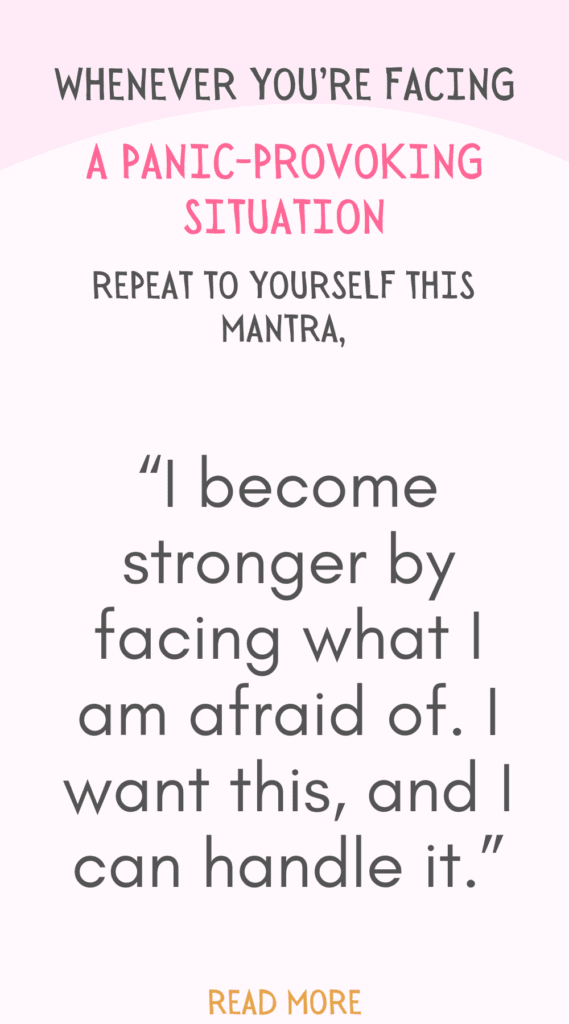
#6. Look At Your Avoidance Behaviors
Avoidance behavior seems to work in the short term, which makes it that much more reinforcing and appealing. However, it reinforces the belief that (a) you definitely would have had a panic attack at the situation or place you’re avoiding, and (b) increases your fear of panic attacks.
1. Identify Avoidance Behaviors
The first step to challenging your avoidance behaviors is to identify these behaviors.
What situations am I avoiding? In what way(s) do I tend to avoid them?
What thoughts, feelings, and sensations in your body do I try to escape or avoid?
2. Reflect on Your Strengths and Wins
Recalling wins helps you challenge your negative thoughts and beliefs more effectively. You have proof that if you handled this in the past, you can handle it now.
Think about a few times in your life when you had to face your fears and chose not to avoid them, such as being nervous on the first day of college, and yet you went through it anyway and did just fine.
3. Reflect on Some Struggles
The idea here is to show yourself how much you’re losing by avoiding and to motivate you to try something different next time.
Recall some situations you avoided and ask yourself the following questions:
* How did it feel to avoid the situation?
* What was the cost of this avoidance?
* Was I better or worse off for having avoided this situation?
#7. Get Some Exposure
Face your fears by gradually exposing yourself to the situations you’re avoiding.
This new experience will teach your brain that neither panic attacks, not the situations that might evoke them are dangerous or life-threatening.
1. Create A Hierarchy
Identify the situations you tend to avoid and order them from the least terrifying to the most terrifying.
Such situation might include filling your car up with gas, going on a job interview, flying on an airplane, meeting up with friends after work, going on a first date, public speaking, etc.
2. Try Imaginal Exposure
You can start practicing exposure in your mind first, by visualizing being in the situation you fear while staying present and grounded.
Once you’re comfortable enough visualizing this situation in your mind, move on to real life and go to the situation that you are fearful of having a panic attack in.
3. Get Out And Do It
Starting with easier items on your hierarchy, expose yourself to the situations you fear until you become comfortable enough to move on to the next item on your list.
4. Just Sit With It
When you start feeling panic, instead of jumping into problem-solving mode, stop for a moment.
Take a deep breath, and see if you can sit and do nothing.
Just be with yourself and your panic attack.
Is Exposure Therapy Right For You?
Exposure can increase your self-confidence and sense of mastery by reducing your fear of situations that provokes your anxiety.
At the same time, exposure therapy can be extremely uncomfortable.
Symptoms, like fatigue, tension, and irritability can be triggered by exposure therapy. However, it is a short-term pain for a long-term gain.
It is also important to make sure that you are medically fit to do exposure therapy.
Related: Anxiety Relief: How to Treat Anxious Symptoms and Thoughts Effectively?
#8. Use Mindfulness
Mindfulness involves nonjudgmental, open observation of your direct internal and external experience, instead of being swept away by catastrophic thoughts and assumptions (e.g. the panic attack is never going to end) about things that are untrue or unknown.
1. Increasing Body Awareness
Developing body awareness is an important strategy in overcoming panic attacks – it helps you see these panic attacks for what they really are and what they are not.
1. Take a few deep breaths to slow down your thoughts and bring your awareness to the present.
2. Start mindfully engaging your brain and bringing your attention to your sensory experience.
3. Ask yourself “What am I feeling in this moment?” – identify your sensory feelings (tightness, or heavy pulsing of your heart, etc).
The key here is to observe in a nonjudgmental way without turning your sensations into something bigger.
Mindfulness helps you gain control over the panic attack. Instead of thinking “I’m losing control,” you start thinking to yourself, “I do have some control over where I put my attention and energy right now.”
Mindfulness also helps you stay grounded in the moment and in your direct present experience and helps you calm down.
2. Progressive Muscle Relaxation
Progressive muscle relaxation is as exercise that has both mindfulness and relaxation benefits. (*)
For this exercise, find a comfortable place to sit. You will be progressively tensing (for five to seven seconds) and relaxing (for seven to ten seconds) your muscles from your feet to your head
1. Start with your feet. Curl your toes and hold the tension in your feet then relax.
2. Move up to your calves and repeat the flex and relax and continue up your body (thighs, buttocks, core/abs, chest, shoulders, arms, hands, neck, face, and head).
3. Once you are finished with all of the muscle groups, take a few deep, calming breaths, and notice the sensations in your body.
With practice, you’ll be able to tense and relax for shorter times and practice wherever you sitting down.
3. Take A Mindful Shower
Showers are a great way to practice mindfulness because they are loaded with sensory input.
Keep in mind that the idea is to develop nonjudgmental awareness so that when you experience a panic attack, you can stay grounded and calm down more easily.
* Turn on the shower and feel the warm water splashing your body.
* Notice the smells of your shampoo, the texture of lotions, and the sounds of the water hitting the floor.
Move from one sensory input to the next, and observe how you feel throughout the experience.
#9. Use Coping Strategies
If you’re starting to panic, control your emotions by using distraction, deep breathing, and grounding exercises.
1. Distraction
Distraction helps give your brain something else to focus on besides the panic, which can help reduce your fearful thoughts and calm you down.
Distracting activities might include playing a game on your phone, watching a video online, walking outside, playing with a pet, reading an article, etc.
Come up with a list of healthy activity you can use to distract yourself.
2. Deep-Breathing Exercise
Shallow breathing is one of the main symptoms of panic attacks.
This is why practicing deep breathing when having a panic attack can be help you calm down and regulate your breathing.
Take long, deep breaths in for a count of four and then long, slow exhales for a count of six.
Repeat at least three times or for as long as you feel the need to.
3. 5-4-3-2-1 Grounding Exercise
Grounding exercises help you stay present and stop your mind from running away to some future catastrophe.
1. Name five things you can see right now.
2. Name four things you can touch right now.
3. Name three things you can hear right now.
4. Name two things you can smell right now.
5. Name one thing you can taste right now.
Conclusion: The Road to Progress Isn’t Always Straight
Overcoming your fearful thoughts around panic attacks is not a linear process.
Generally, the more you practice, the more you continue to build your skills. But there will be days when you feel less confident, and certain situations will be hard to tackle.
Remind yourself that progress isn’t measured by the presence or absence of your panic and anxiety symptoms, but rather how you respond to panic and anxiety.
Your willingness to respond with courage and acceptance is a better measure of progress.
Keep in mind change does not happen overnight and the real benefits are going to show up after much time and effort.
Once the strategies you’ve learned become habits and the concepts become a natural part of your mindset, you’ll start to notice that you’re going in your desired direction.


References
- Portions of this article were adapted from the book Overcoming Panic Attacks, © 2020 by David Shanley. All rights reserved.
- Portions of this article were adapted from the book Don’t Panic, © 2009 by Reid Wilson. All rights reserved.
- https://www.mayoclinic.org/diseases-conditions/agoraphobia/symptoms-causes/syc-20355987
- https://www.nhs.uk/mental-health/conditions/agoraphobia/overview/
- https://my.clevelandclinic.org/health/diseases/15769-agoraphobia
- https://www.webmd.com/anxiety-panic/agoraphobia
- https://mecp.springeropen.com/articles/10.1186/s43045-021-00110-y
- https://www.ncbi.nlm.nih.gov/pmc/articles/PMC7387026/
- https://bpsmedicine.biomedcentral.com/articles/10.1186/1751-0759-6-12
- https://www.frontiersin.org/articles/10.3389/fpsyt.2018.00541/full
- https://www.psychiatryadvisor.com/home/topics/anxiety/agoraphobia-an-evolving-understanding-of-definitions-and-treatment/
- https://www.sciencedirect.com/science/article/abs/pii/000579678590018X
